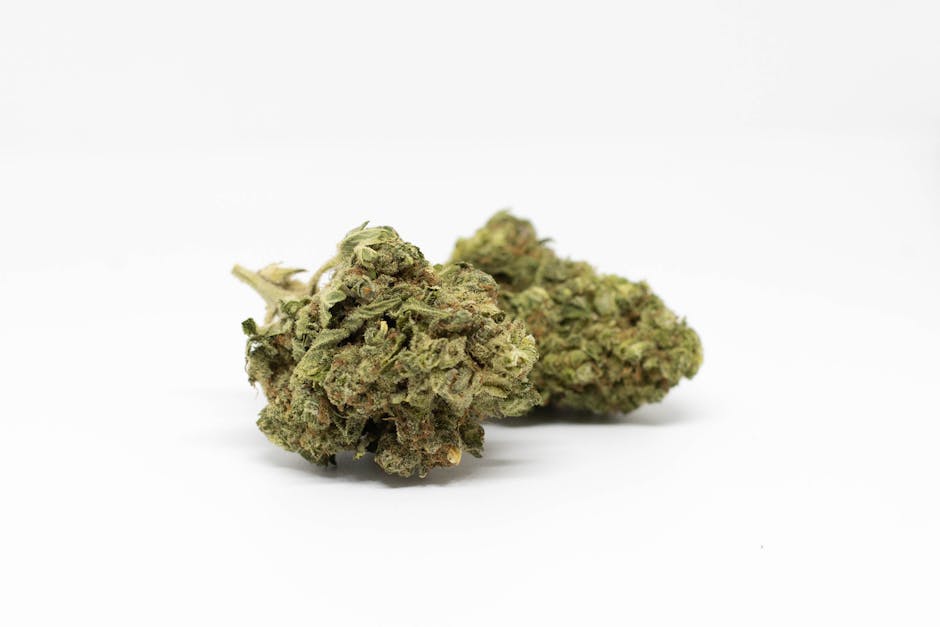Vapor Trails: Navigating the Health Impacts of Weed Vapes

Weed vape devices, often hailed for their convenience and discretion, have become a popular choice among cannabis users looking for a cleaner alternative to smoking. But how do these devices actually work and what are the potential health impacts?
- Convenience: Portable and easy to use, weed vapes offer an efficient method to consume cannabis without the mess or odor of traditional smoking.
- Health Impacts: While considered less harmful than smoking, vaping still poses risks, such as potential respiratory issues.
- Potency and Flavor: Weed vapes often provide a more potent and flavorful experience by preserving the cannabis terpenes.
As an industry expert, my experience as the owner and CEO of Zaleaf ensures that our products are of the highest quality, having undergone rigorous third-party testing. With a firm grounding in cannabis trends, my goal is to provide expert guidance and reliable products for those seeking a premium cannabis experience.

Learn more about weed vape: - thc vape pen - dry herb vaporizer - what are dabs
Understanding Weed Vapes
Weed vapes have carved out a niche in cannabis consumption, offering a modern twist on enjoying the plant's benefits. But what exactly are these devices and how do they fit into the broader landscape of cannabis use?
What is a Weed Vape?
A weed vape is a device that heats cannabis to a temperature high enough to release its active compounds into vapor, but not so high that it causes combustion. This process allows users to inhale the vapor, which is typically rich in cannabinoids like THC, without the harmful byproducts of burning plant material.
How Does a THC Vape Work?
THC vapes come in various forms, including portable pens and larger desktop units. They use two main heating methods:
-
Conduction: This involves direct contact between the cannabis and a heated surface, similar to how a kettle heats water. It's known for consistent extraction of active ingredients.
-
Convection: Here, hot air circulates around the cannabis, gently extracting the compounds. This method often results in a more flavorful vapor.
Both methods aim to provide a smooth and efficient delivery of THC and other cannabinoids.
Cannabis Consumption: A New Era
The rise of weed vapes represents a shift in cannabis consumption. With their discreet design and ease of use, these devices have become a favorite for both seasoned users and newcomers. Unlike traditional smoking methods, vaping is often viewed as a cleaner and more controlled way to enjoy cannabis.
In fact, a report by BDS Analytics highlights that vape cartridges have become one of the most popular cannabis products, with sales reaching $476 million in just the first half of the year.
The Benefits of Weed Vapes
- Portability: Ideal for on-the-go use, portable vapes fit easily into a pocket or bag.
- Customization: Users can select specific temperature settings to tailor their experience.
- Efficiency: Vapes can often extract more cannabinoids from the same amount of cannabis compared to traditional smoking.
The Zaleaf Difference
At Zaleaf, we prioritize quality and safety. Our products are crafted from non-GMO, USA-grown hemp and undergo thorough lab testing to ensure purity and potency. We are committed to providing a premium cannabis experience that aligns with the latest industry trends and consumer needs.
By understanding weed vapes, consumers can make informed choices about their cannabis consumption, enjoying the benefits while minimizing potential risks.

Health Impacts of Vaping Cannabis
Vaping cannabis is often seen as a cleaner alternative to smoking, but it's not without its own set of health concerns. Let's explore some of the potential impacts on health, particularly focusing on respiratory issues and lung injuries.
Respiratory Issues and Vaping
While weed vapes may reduce exposure to harmful substances found in smoke, they are not entirely risk-free. Vaping involves inhaling vapor, which can still irritate the respiratory system. Some users report coughing and throat irritation after vaping.
Lung Injuries: A Growing Concern
In recent years, there have been reports of severe lung injuries associated with vaping. According to a study compiled by researchers at the University of Michigan, vaping THC has been linked to a nationwide outbreak of respiratory illnesses. In 2019 alone, there were over 2,400 hospitalizations and 52 deaths related to vaping-related lung injuries. Most of these cases involved individuals who vaped THC, the active ingredient in cannabis.
The University of Michigan Study
The University of Michigan's "Monitoring the Future" study sheds light on the increasing trend of THC vaping among teens. The study found that more than 20% of high school seniors reported vaping THC in 2019. This increase is alarming, as it suggests a rise in potential health risks among young users.
Richard Miech, who led the study, highlighted the stealthy nature of vaping devices, which makes them appealing to teens. "Vaping allows teens to get around the policies and procedures put in place to prevent teen drug use," he noted.
What Does This Mean for Cannabis Consumers?
While the popularity of weed vapes continues to grow, it's crucial for users to be aware of the potential health impacts. Choosing high-quality, lab-tested products like those offered by Zaleaf can help mitigate some risks. However, understanding the potential for respiratory issues and lung injuries is essential for making informed decisions about cannabis consumption.
As we continue to learn more about the long-term effects of vaping cannabis, staying informed and cautious is key.
Comparing Weed Vapes to Other Consumption Methods
When it comes to cannabis consumption, there are several methods to consider, each with its own set of implications. Let's explore how weed vapes stack up against other popular methods like e-cigarettes, smoking marijuana, and nicotine vaping.
Weed Vapes vs. E-Cigarettes
Both weed vapes and e-cigarettes are popular for their convenience and perceived reduction in harm compared to traditional smoking. However, they serve different purposes. E-cigarettes are primarily used for nicotine delivery, often appealing to those transitioning from smoking cigarettes. In contrast, weed vapes are designed for THC or CBD delivery, targeting cannabis consumers.
One critical difference is the substance being inhaled. While e-cigarettes typically contain nicotine, weed vapes deliver cannabinoids, which can have different effects on the body and mind. Adolescents using e-cigarettes are more likely to try marijuana, as highlighted in a Reuters Health study. This connection raises concerns about the potential gateway effect of nicotine vaping on cannabis use.
Smoking Marijuana vs. Vaping Weed
Smoking marijuana involves combustion, which produces harmful byproducts like tar and carcinogens. Inhaling these substances can lead to respiratory issues over time. On the other hand, weed vapes heat cannabis to a temperature that releases cannabinoids without combustion, potentially reducing exposure to harmful chemicals.
While vaping is often seen as a cleaner alternative, it's not without risks. As mentioned earlier, vaping can still irritate the respiratory system and has been linked to lung injuries. The University of Michigan study highlighted a significant increase in THC vaping among teens, raising concerns about the long-term health impacts.
Nicotine Vaping vs. Weed Vaping
Nicotine vaping and weed vaping share similarities in their delivery methods but differ significantly in their effects. Nicotine is a stimulant that can increase alertness and lift mood temporarily. In contrast, THC, the primary component in weed vapes, is psychoactive, producing a "high" and altering perception.
The health impacts also differ. While nicotine is highly addictive and can lead to cardiovascular issues, THC vaping has been associated with respiratory problems and, in severe cases, lung injuries. The key takeaway is that both forms of vaping carry potential health risks, and users should be informed about what they're inhaling.
In summary, each method of cannabis consumption has its pros and cons. While weed vapes offer a smoke-free alternative, they are not entirely risk-free. Understanding these differences can help users make informed choices about their cannabis consumption.
Leading into the next section, let's address some common questions about weed vapes.
Frequently Asked Questions about Weed Vapes
What is vaping weed called?
When you consume cannabis using a vape, it's typically referred to as vaping weed. This method involves heating cannabis to a temperature that releases its active compounds without burning it. Another term you might hear is dabbing, which is a form of vaping that uses concentrated cannabis extracts for a more intense experience. Both methods are popular among users looking for a cleaner and potentially less harmful way to enjoy cannabis compared to traditional smoking.
Do vapes get you high?
Yes, weed vapes can get you high. The primary psychoactive component in cannabis, THC, is released when you vape, leading to the "high" sensation. This effect can vary depending on the concentration of THC in the cannabis product you're using. Unlike nicotine, which stimulates the release of adrenaline and can increase alertness, THC alters perception and can produce a more relaxed and euphoric state.
Is it OK to smoke vaped weed?
Once cannabis has been vaped, much of its active compounds have been used up, leaving behind what's often called "already vaped bud" (AVB). While some people choose to smoke or even cook with AVB, it's generally not the most effective way to consume cannabis. Most of the THC has already been vaporized, so the potency is significantly reduced. For those seeking the healthiest methods of cannabis consumption, sticking with vaping or using fresh cannabis products is recommended.
Understanding these aspects of weed vapes can help users make informed decisions about their cannabis consumption. Next, we'll dig into the legal landscape of cannabis products and the importance of third-party testing.
Conclusion
At Zaleaf, we are committed to providing legal cannabis products that prioritize both quality and safety. Our offerings are designed for those seeking a reliable and enjoyable cannabis experience without the need for an ID or medical card. We understand that navigating cannabis can be daunting, especially with concerns about legality and product safety. That's why we ensure all our products meet the highest standards.
One key aspect that sets us apart is our dedication to third-party testing. Every product undergoes rigorous testing in DEA-registered labs to verify its purity, potency, and safety. This process not only guarantees the quality of our products but also gives our customers peace of mind. You can trust that what you're consuming is free from harmful additives and contaminants.
Our focus is on enhancing the cannabinoid and terpene profiles of our products to deliver mood-specific effects. Whether you're looking for relaxation, creativity, or energy, our expertly crafted cannabis products cater to a wide range of preferences and needs.
With fast shipping and discrete packaging, we make it easy and convenient to explore the benefits of cannabis. Our goal is to educate and empower our customers, ensuring they have access to the information and products they need to make informed choices.
For more information on our THC vape pens and to explore our full range of products, visit our THC Vape Pens Collection. Experience the Zaleaf difference today!

